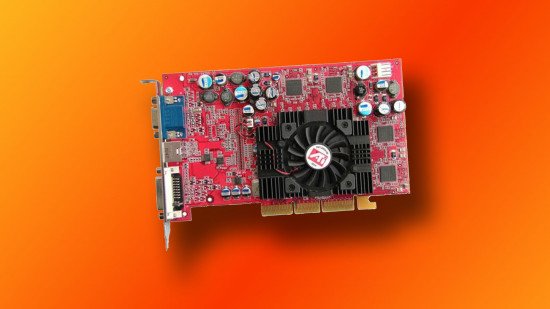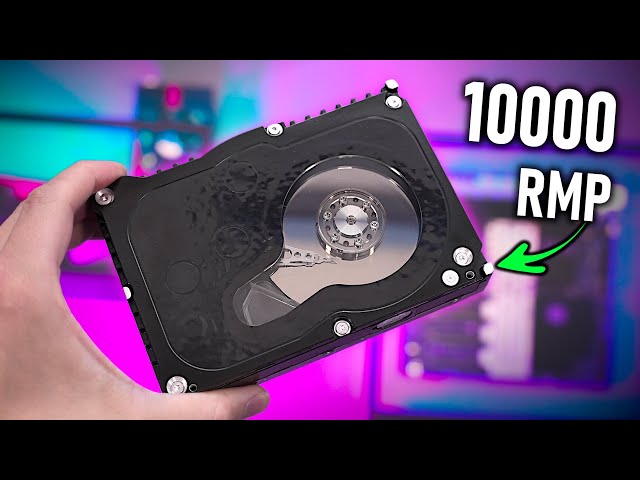## From Pixels to Powerhouses: 25 PC Hardware Components That Shaped Gaming
Remember the days of dial-up internet and grainy graphics? We’ve come a long way, baby! Today’s PC gaming rigs are absolute beasts, capable of rendering worlds so immersive you’ll swear you can touch the pixels. But have you ever wondered which components were instrumental in this epic journey from clunky CRTs to jaw-dropping 4K displays?


The Pixel Pushers
Few advancements in PC gaming history have been as transformative as the evolution of graphics cards. From the humble beginnings of basic 3D acceleration to today’s ray-tracing behemoths capable of rendering breathtakingly realistic visuals, the journey of the graphics card is a testament to the relentless pursuit of visual fidelity.
Early 3D acceleration cards, like the ATI 3D Rage and Nvidia Riva TNT, were pioneering efforts, pushing the boundaries of what was possible on the PC gaming front. They enabled rudimentary 3D graphics in games, albeit with limited polygons and textures. This paved the way for the arrival of the Nvidia GeForce 256, a revolutionary card that introduced programmable shaders, opening up a new dimension of graphical complexity and visual effects.
The GeForce 3 and ATI Radeon 8500 ushered in the era of high-resolution textures and anti-aliasing, significantly improving the visual clarity and detail in games. The GeForce 6800 series marked a leap forward with its support for Shader Model 3.0, enabling more sophisticated lighting and shadow effects. The introduction of DirectX 10 with the GeForce 8800 GTX brought about a paradigm shift, paving the way for games to utilize advanced techniques like particle effects and realistic water rendering.
Modern graphics cards, powered by architectures like Nvidia’s RTX series and AMD’s RX series, have reached astonishing levels of performance. Ray tracing, a technique that simulates the physical behavior of light, has become a game-changer, adding unprecedented realism to lighting, reflections, and shadows. High refresh rate monitors, capable of displaying up to 240Hz or even 360Hz, have further enhanced the gaming experience, providing buttery-smooth gameplay.
The Age of the FPS
The rise of first-person shooters (FPS) in the 1990s coincided with a pivotal era in PC gaming hardware development. Games like Doom and Quake, with their fast-paced action and immersive 3D environments, demanded increasingly powerful hardware.
The advancements in graphics and processing power fueled this evolution. The introduction of 3D acceleration, as mentioned earlier, was crucial in enabling the visually stunning environments of early FPS titles. The Nvidia Riva TNT2 and ATI Rage 128 Pro were among the first cards designed specifically for the demands of FPS gaming, offering improved frame rates and smoother gameplay.
The Intel Pentium II and AMD Athlon processors, with their higher clock speeds and improved instruction sets, provided the necessary horsepower to handle the complex calculations required for realistic physics, AI, and multiplayer interactions. The introduction of dedicated sound cards, such as the Creative Sound Blaster Live!, further enhanced the immersive audio experience, with spatial sound effects and realistic weapon sounds.
The combination of these hardware advancements resulted in a gaming revolution. FPS games became increasingly popular, with titles like Half-Life, Counter-Strike, and Call of Duty captivating millions of players worldwide. The competitive gaming scene also flourished, with professional tournaments and leagues forming around popular FPS titles, solidifying the genre’s place as a cornerstone of PC gaming.
The Modern Era: Performance, Features, and Connectivity
The PC gaming landscape of today is characterized by a relentless pursuit of performance, innovative features, and seamless connectivity. Advancements in core components have significantly elevated the gaming experience, pushing the boundaries of visual fidelity, responsiveness, and immersion.
The Rise of the Core
Multi-core processors have become the norm, enabling games to leverage multiple CPU cores for complex calculations, AI processing, and physics simulations. The transition from dual-core to quad-core, and now to 8-core and even 16-core processors, has resulted in a substantial performance boost, allowing for smoother gameplay, shorter loading times, and more complex game worlds.
AMD’s Ryzen series and Intel’s Core i7 and Core i9 series are prime examples of high-performance multi-core processors designed to meet the demands of modern games. These processors often feature high clock speeds, large cache sizes, and advanced instruction sets, enabling them to handle demanding tasks with ease.
The SSD Advantage
Solid-state drives (SSDs) have revolutionized PC gaming, virtually eliminating loading times and enhancing overall system responsiveness. By utilizing flash memory instead of spinning hard drives, SSDs offer significantly faster read and write speeds, resulting in near-instantaneous game loading, faster level transitions, and reduced stuttering.
The impact of SSDs on the gaming experience is undeniable. Games load much quicker, allowing players to jump into the action faster. System-wide responsiveness improves, with applications launching and files opening almost instantly. This translates to a smoother and more enjoyable gaming experience overall.
Beyond the Core: Peripheral Innovations
The Evolution of the Keyboard and Mouse
Gaming peripherals have evolved significantly, with a focus on ergonomic design, enhanced responsiveness, and specialized features. Gaming keyboards have moved beyond basic membrane designs to incorporate mechanical switches, offering faster actuation times, greater durability, and a satisfying tactile feedback.
Mechanical keyboards, with their individual switches for each key, provide a more precise and responsive typing experience. Popular switch types like Cherry MX Red, Brown, and Blue offer different levels of actuation force and feedback, catering to individual preferences. Features like macro keys, RGB lighting, and customizable profiles allow gamers to tailor their keyboards to their specific needs and style.
Gaming mice have also undergone a transformation, with a focus on weight reduction, ergonomic shapes, and advanced sensor technology. Wireless gaming mice, with their freedom of movement and reduced cable interference, have become increasingly popular. Ergonomic designs, such as the ambidextrous shapes found in the Logitech G Pro Wireless, ensure comfortable use for extended gaming sessions.
Advanced sensor technology in gaming mice enables high DPI (dots per inch) values, providing greater precision and tracking accuracy. Programmable buttons allow gamers to assign specific actions or macros to individual keys, streamlining gameplay and enhancing efficiency.
The Rise of the Headset
Headsets have become essential peripherals for PC gamers, providing immersive audio experiences and clear communication with teammates. Early headsets were simply basic stereo headphones with a microphone, but advancements have led to sophisticated headsets with surround sound capabilities, noise-canceling technologies, and high-fidelity audio drivers.
Surround sound headsets, such as those using 7.1 or Dolby Atmos technology, create a more realistic and immersive audio environment by simulating sounds coming from different directions. This allows gamers to pinpoint enemy locations more accurately, enhancing their strategic awareness and competitive edge.
Noise-canceling technologies in headsets help to block out distracting ambient noise, allowing gamers to focus on the game audio and communicate with teammates more clearly. High-fidelity audio drivers provide clear and detailed sound reproduction, enhancing the overall immersion and enjoyment of the gaming experience.
Conclusion
So, there you have it: 25 components that have shaped the PC gaming landscape, each a testament to the relentless pursuit of better performance, immersion, and innovation. From the groundbreaking graphics cards that brought us photorealistic worlds to the ingenious motherboards that seamlessly connected the pieces, these components have fueled countless epic gaming moments and pushed the boundaries of what’s possible.
But this isn’t just a celebration of the past; it’s a glimpse into the future. Just as these iconic components paved the way for what we have today, the advancements of tomorrow will undoubtedly build upon their legacy. Imagine VR experiences so immersive they blur the line between reality and virtuality, or ray-traced graphics that capture the subtle nuances of light and shadow with breathtaking realism. The possibilities are endless, and the journey continues. The 25 components we’ve highlighted are not just pieces of hardware; they are stepping stones on a path towards a future where gaming transcends limitations and becomes truly unforgettable.
The future of PC gaming is bright, and it’s being built, component by component, on the shoulders of giants. What legacy will your gaming setup leave behind?